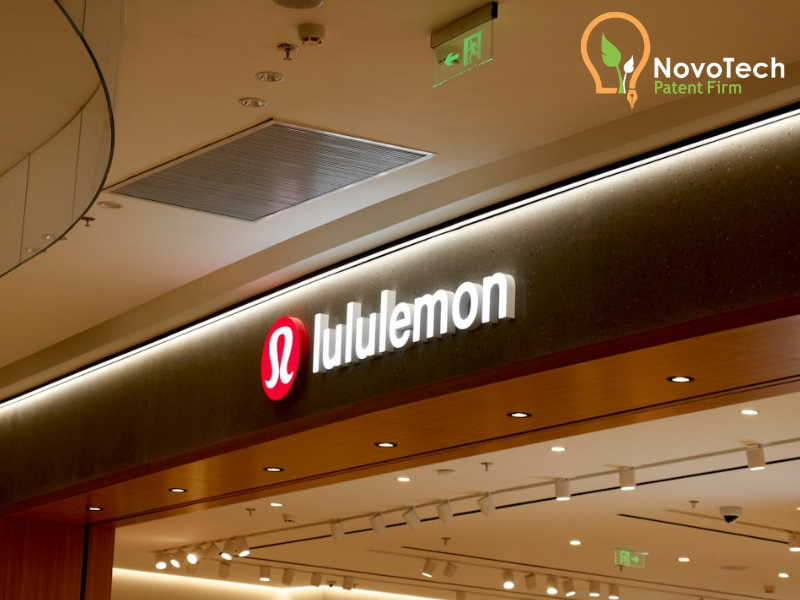
How TikTok Users Are Accidentally Building Lululemon’s $Million Design Patent Case
By Babak Akhlaghi on July 6, 2025. Thousands of TikTok users are accidentally building one of the strongest design patent cases in recent history.
Every time someone posts a side-by-side comparison with #LululemonDupes, they’re creating evidence that could be worth millions in Lululemon’s lawsuit against Costco. The irony is staggering.
I teach IP law at University of Maryland, and I’ve never seen anything like this. Social media has created a double-edged sword that simultaneously destroys brand value while building legal cases.
The Evidence Goldmine
Traditional design patent litigation requires expensive expert witnesses and consumer surveys to prove ordinary observers would find products substantially similar. Lululemon just got that evidence for free.
When consumers post “you can’t tell the difference” or “looks exactly like Lululemon,” they’re providing testimony that supports the ordinary observer test. It’s like having thousands of unpaid witnesses documenting infringement.
The price differential makes this even more compelling. Lululemon’s Scuba hoodie costs $118 while Costco’s alleged dupe costs $8. That’s a 15x price gap that makes the visual similarity claims more significant.
I remind my students that design patents protect how products look, not how they function. If Costco’s hoodie copies Lululemon’s ornamental design, material differences won’t save them from infringement.
Why the Lululemon Costco Lawsuit Design Patent Claims Matter
Design patents weren’t taken seriously until 2011. Then Apple sued Samsung for copying “the ornamental design of an electronic device” and everything changed.
Apple’s design patent was essentially one sentence with nine figures showing a thin rectangular device with rounded corners. Samsung paid dearly for that similarity.
The same scenario could play out here. Lululemon has an extensive design patent portfolio covering their athletic wear, including the Scuba hoodie and Define jacket designs at the center of this lawsuit.
But here’s what’s different now. Samsung wasn’t getting millions of consumers on social media actively promoting their “iPhone dupes” with celebratory hashtags.
The Enforcement Reality
Patents are worthless without enforcement. They’re nothing but a plaque on the wall if you don’t fight for them.
I use this analogy with my students: imagine a non-paying tenant who refuses to leave. You can ask nicely, but if they’re making money from staying, they won’t budge. Your only option is legal eviction.
Patent infringement works the same way. Cease and desist letters might work with small companies, but when you’re facing Costco with deep pockets and massive market impact, litigation becomes necessary.
This isn’t a popularity contest. Lululemon is fighting for market share, and consumers who can afford premium products will return when cheaper alternatives disappear.
The Ordinary Observer Problem
Here’s where social media creates unprecedented complications. The legal “ordinary observer” isn’t a TikTok influencer or someone liking posts.
It’s a hypothetical individual familiar with prior art who gives typical attention when purchasing. They don’t need to be experts, but they need to represent average consumer behavior.
The challenge is that today’s ordinary observer increasingly arrives at stores already having seen dupe comparisons on social media. TikTok users spend 53.8 minutes daily on the platform, where dupe culture is constantly reinforced.
This creates a fundamental question: when someone has already seen explicit product comparisons on TikTok, can we say they’re giving “typical attention” when they encounter those products in person?
The Strategic Calculation
Lululemon’s legal team probably loves having all this social media evidence. It makes proving design similarity much easier than traditional methods.
But the business reality is more complex. The same social media posts that strengthen their legal case are actively promoting cheaper alternatives and damaging sales.
This suggests a potential new strategy for luxury brands: allow dupe culture to exist long enough to build ironclad infringement cases, then shut it down with overwhelming evidence.
The precedent this could set is significant. If Lululemon wins using social media evidence, it validates a new approach to IP enforcement in the digital age.
The Legal Evolution
Courts are going to struggle with this because current IP law was developed in a pre-social media world. The ordinary observer test assumes casual attention that may no longer reflect reality.
We might need updated legal standards that account for how informed today’s consumers are about product similarities. When ordinary observers in 2025 are much more knowledgeable than when these tests were created, the entire framework needs reconsideration.
The traditional assumption of casual shopping behavior breaks down when consumers research products online, see comparison videos, and arrive at stores with heightened awareness about design similarities.
This could force fundamental changes in design patent law. We’re watching the collision between 20th-century legal frameworks and 21st-century consumer behavior.
The Bigger Picture
This lawsuit represents more than just Lululemon versus Costco. It’s about whether intellectual property protection can survive in an era where consumers actively celebrate and promote dupes.
Social media has transformed “knockoffs” into “dupes,” changing the cultural perception from shameful copying to smart shopping. This normalization challenges the entire premise of design patent protection.
The outcome will determine whether luxury brands can maintain exclusivity in a world where visual similarity is instantly documented and shared by millions of consumers.
From my perspective teaching the next generation of IP lawyers, this case will likely become required reading. It perfectly captures the tension between traditional legal frameworks and modern consumer behavior.
The real question isn’t whether Lululemon will win this specific case. It’s whether design patents can evolve quickly enough to remain relevant in the age of social media.
Stay Informed with Expert Insights!
Want more valuable tips on navigating patent law and protecting your intellectual property? Join our free weekly newsletter for the latest updates, expert advice, and exclusive content straight to your inbox. Subscribe today and never miss out on essential information that can make all the difference in your patent journey! Subscribe to our Newsletter